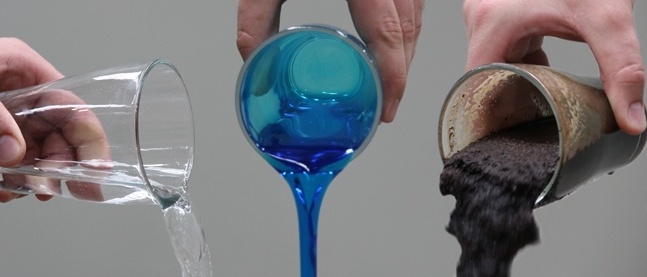When you are selecting a pump, it is crucial that you understand the fluid you are pumping.

Ask yourself the following questions:
- What happens when it’s heated?
- When energy is added – what will happen?
As you choose a pump, you’ll learn that several factors come into play, and the viscosity of the fluid is one of them. To ensure you’re selecting an appropriate pump, our Global Pumps team have created a useful guide to outline the basics of viscosity, selecting the right pump, and why viscosity is important in pump selection.
What is viscosity?
Viscosity is how thick or runny your product is. It must be considered when selecting a pump and determining the friction losses in a fluid process system.
Viscosity is expressed in units of SSU (Seconds Saybolt Universal), cPs (Centipoise) or cSt (Centistokes) – and is represented in the following equation:
SSI = cSt x 4.55 (where cSt are greater than 50)
cSt = cPs/SG (specific gravity)
Viscosity Terminology to Know
Newtonian: Liquids with that have a reduced viscosity, with a rising temperature, are referred to as Newtonian - an example being motor oil.
Shear Thinning or Thixotropic: When energy is applied, and the liquid exhibits reduced viscosity, it is referred to as Shear Thinning or Thixotropic – an example of this being paint.
Shear Thickening or Dilatant: When energy is applied, and the liquid exhibits increasing viscosity, it is referred to as Shear Thickening or Dilatant. An example of this being candy compounds.
How do you test for Viscosity?
Testing is conducted through a range of shear rates and temperatures, with the viscosity results plotted on a graph. A given flow rate through a specific sized pump determines the shear rate that that line velocity – and as you know the temperate and shear rate, it will define the viscosity for those conditions.
The Right Pump for the Right Viscosity
If you know the viscosity, among other operating parameters, you will be able to determine the correct pump for your application.
Generally, a centrifugal pump is suitable for low viscosity fluids – as the pump is generated high liquid shear. If the viscosity increases the pump performance must be adjusted to account for the additional resistance to shear. As this occurs, there is a small reduction in flow, a significant reduction in head or pressure, and a considerable increase in power draw.
Positive displacement pumps are the recommended pump when handling viscous fluids. They operate at lower speeds and transfer lower amounts of shear energy to the fluid in comparison to a centrifugal pump. Based on your application, there are a wide variety of positive displacement pumps that are appropriate.
Why is viscosity important in pump selection?
Viscosity is a crucial factor in determining the friction loss, due to the shear energy in a fluid process system. It is also important to understand as you select the size of valves, filters, instrumentation and piping.
Global Pumps have put together a typical list of viscosities. These will help you determine exactly what the viscosity is of the fluid you are pumping.
To find our which pump is suitable for your application, contact our Global Pumps team.

